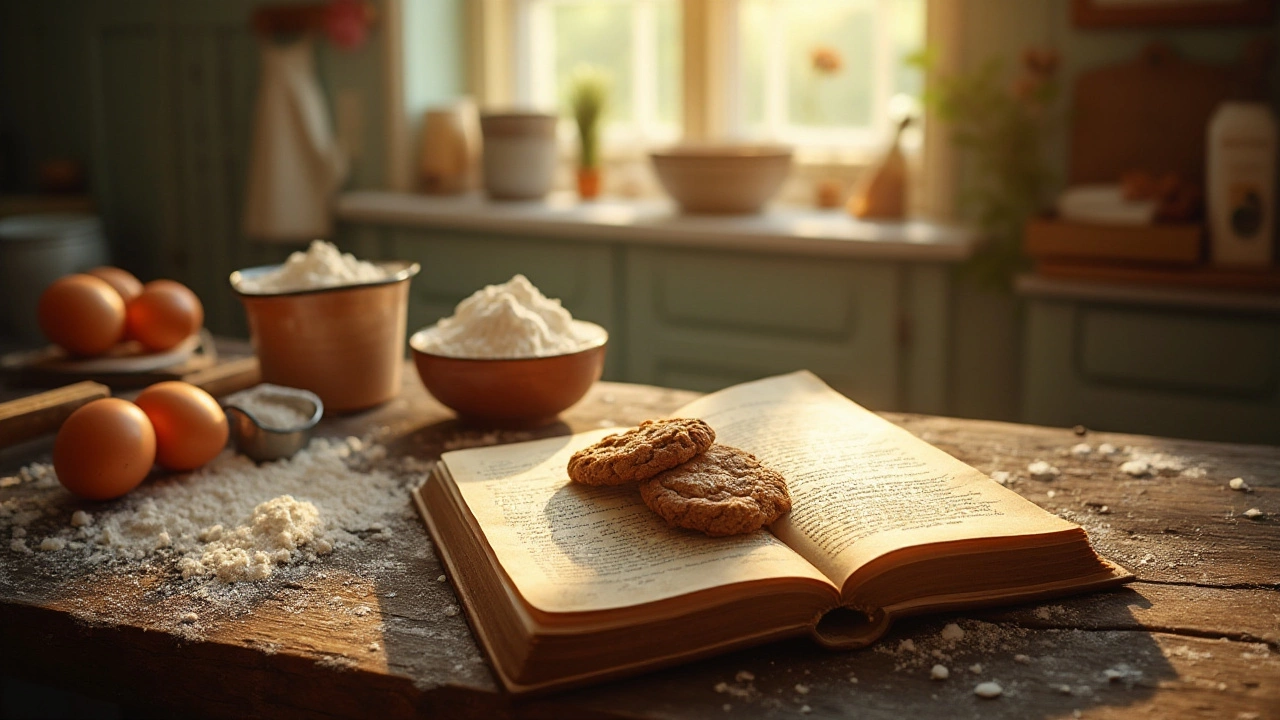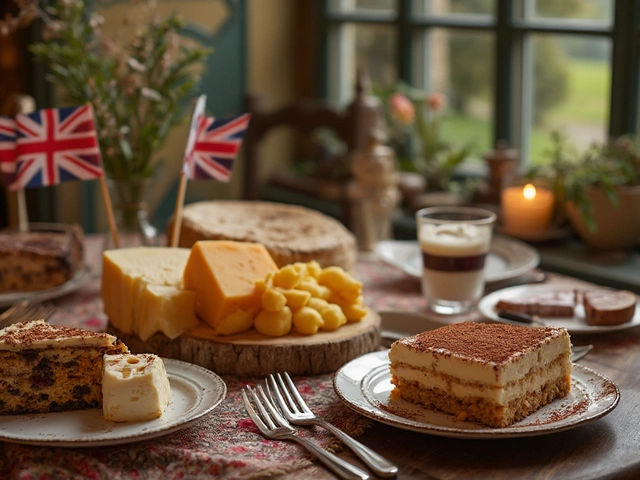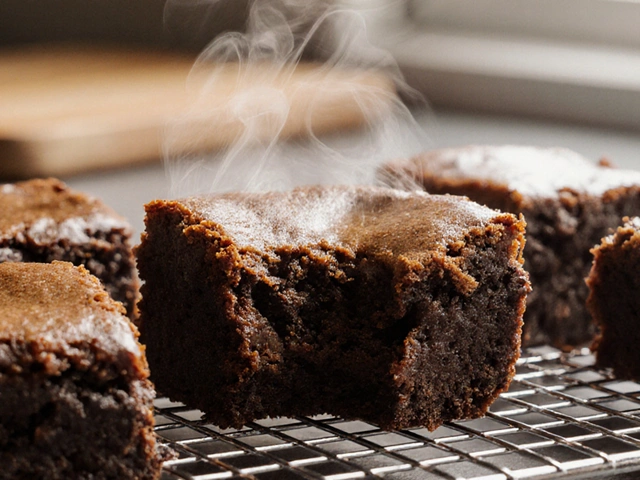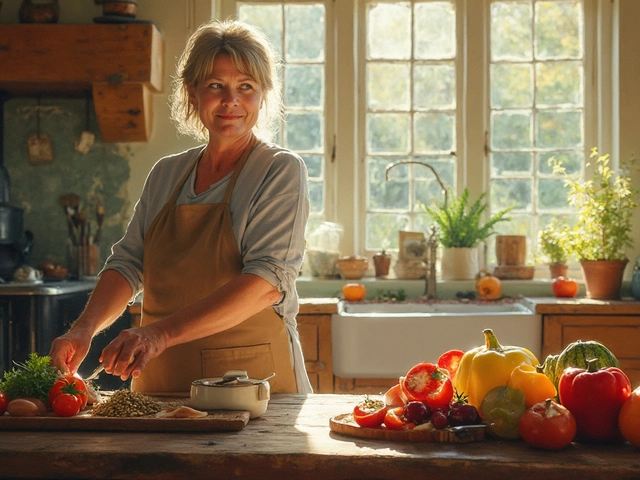Ah, the humble cookie - a treat that has the power to transport us back to cozy kitchens and childhood afternoons. But what elevates a mere cookie to legendary status? It's more than just flour and sugar; it’s about crafting memories, savoring flavors, and creating something undeniably special.
In this delightful exploration, we’ll delve into what sets legendary homemade cookies apart from the rest. Whether it's the gooey center of a chocolate chip cookie fresh from the oven or the spice of a cherished gingerbread recipe, each cookie tells a story. Let's uncover the heartwarming secrets behind these sweet delicacies, and maybe even inspire you to bake your own legendary batch.
- The Essence of Legendary Cookies
- Key Ingredients and Techniques
- Secrets to Perfect Textures and Flavors
- Unique Cookie Traditions and Stories
- Crafting Your Own Signature Cookie
The Essence of Legendary Cookies
What makes a cookie stand the test of time? Is it the nostalgic aroma wafting through the house or the satisfying crunch that dances on the palate? The essence of a legendary cookie lies in the joy it scatters among those who partake in its creation and consumption. At the heart of every remarkable cookie is a perfect balance between texture and taste, a culinary symphony that invites each ingredient to play its part beautifully. Whether it's a family recipe passed down through generations or an improvisational dance with ingredients, the creation of a legendary cookie is an art form accessible to all.
To understand what makes these treats memorable, we must first delve into the key components: the selection of ingredients. Flour, sugar, butter, and eggs are the usual suspects, yet it’s the quality and type that set cookies apart. For instance, using a flavorful European-style butter can elevate the richness, while a hint of Madagascar vanilla gives cookies an exotic flair. Homemade cookies are not just about precise measurements but also about experimenting with textures—opting for brown sugar can enhance moisture, while melted butter creates a chewy consistency that many adore. Each choice alters the outcome, and understanding this allows bakers to unlock the secret recipe of a beloved cookie.
Legendary cookies also have a tale to tell. A recipe scribbled in the margins of an old notebook, a grandmother’s recollection of stirring dough with a wooden spoon, or the enthusiastic chatter of children as they sneak cookie dough—these are moments immortalized in every bite. Food historian Jennifer Steinhauer notes,
“The stories we weave into our food serve as the invisible ingredients that infuse cookies with a sense of timelessness and warmth.”Thus, the history behind each recipe adds another layer of allure, inviting bakers to not only rediscover a beloved flavor but also weave their own chapters into the saga.
The journey to creating a legendary cookie also involves mastering technique. Oven temperature is crucial; slight variations can lead to vastly different results. A cookie baked at a lower temperature achieves a uniform crispness, whereas higher temperatures yield a burst of texture from crunchy edges with gooey centers. Such details transform a regular cookie into something unforgettable. The act of savoring that first cookie from the oven, still warm to the touch, transports us into an era where life was a little simpler and moments were cherished deeply.
Finally, the hallmark of a legendary cookie is its ability to adapt to changing times while maintaining its core essence. Whether integrating contemporary ingredients like matcha or vegan substitutes, or honoring dietary restrictions without sacrificing flavor, the legendary cookie remains relevant, evolving to meet the needs and tastes of new generations without losing its original charm. Thus, it bridges the past with the present, ensuring its place on our kitchen counters and in our hearts for years to come.
Key Ingredients and Techniques
When it comes to crafting homemade cookies that leave an indelible mark, the quality of ingredients plays a crucial role. It's the subtle dance of butter, sugar, and flour that lays the foundation of a legendary treat. First and foremost, let's talk about butter; always opt for unsalted butter to better control the salt content in your recipe. The flavor, too, is richer and allows the cookie's inherent sweetness to shine. For those extra chewiness levels, consider using browned butter, a technique that involves melting the butter until the milk solids toast into a golden brown, imparting a nutty depth to your cookie.
Sugar comes in many forms, and for mastering the perfect cookie, using both brown and white sugar is a time-honored tradition. Brown sugar's molasses content adds moisture and imparts a chewy character to your cookies, while white sugar brings out that crispy edge and subtle sweetness. It’s this combination that strikes a balance between chew and crunch. As for flour, it acts as the framework of cookies, and choosing the right one is paramount. While all-purpose flour is a trusty companion, experimenting with cake flour can yield a soft, tender bite, making you rethink traditional choices.
Every legendary cookie story includes a nod to crucial techniques, such as chilling the dough. This step isn't just about enhancing flavor; it’s about texture, too. Cold dough takes longer to spread in the oven, leading to a thicker, chewier treat. Also, allowing flavors to meld and develop while resting in the fridge can elevate your cookie game to astonishing heights. The baking temperature and timing are equally vital. Ever noticed those recipes that call for two different temperatures? There's a science behind it: a high initial temperature sets the outer crust quickly, preserving the soft core within – a clever hack every serious baker should know.
Embracing diversity in flavor profiles, a dash of aromatic spices can transform your cookies from ordinary to extraordinary. Cinnamon adds warmth, whereas a pinch of nutmeg introduces a comforting sweetness. Even herbs like rosemary can surprise you with their savory touch making their way into the realms of legendary cookies.
"The secret of a perfect chocolate chip cookie isn't in the chips but in the journey between butter and flour," says renowned patisserie chef Dominique Ansel. This sentiment captures the essence of how small adjustments and passionate creativity can turn fundamental ingredients into a work of art.
Mixing and Handling Instructions
Selecting the right mixing method can impact the outcome of your cookies. Creaming butter and sugar together until fluffy incorporates air, leading to a light texture. An electric mixer is excellent for this, but do not overmix once the flour is added, or the gluten will overdevelop, resulting in a tough bite. Gently folding in flour ensures tender cookies.
Beyond mixing, baking sheets play a unique role. Lined versus unlined can give different results on the browning spectrum. A layer of parchment paper or a silicone mat reduces spread and promotes even cooking, giving each cookie a uniform and inviting look. Keep in mind using insulated or double-layered pans can affect the bake, often requiring a few extra minutes in the oven. Trial, patience, and practice will guide you to discovering these subtle nuances.
For those seeking a science-backed edge, here’s an enlightening statistic: adding a tablespoon of cornstarch to your flour can yield significantly softer cookies, as it lowers the overall protein content, nudging your relativeness with velvety goodness.
| Ingredient | Quantity |
|---|---|
| Butter (unsalted) | 1 cup |
| Brown sugar | 3/4 cup |
| White sugar | 3/4 cup |
| Flour (all-purpose) | 2 1/4 cups |
In summary, the beauty of legendary cookies lies in the amalgamation of ingredients and the robust techniques used. As you explore the classic elements and master new tricks, remember this is more than just baking—it's about creating something worth sharing, cherishing, and passing down. So go ahead, experiment with the endless possibilities, and let your senses guide and surprise you.
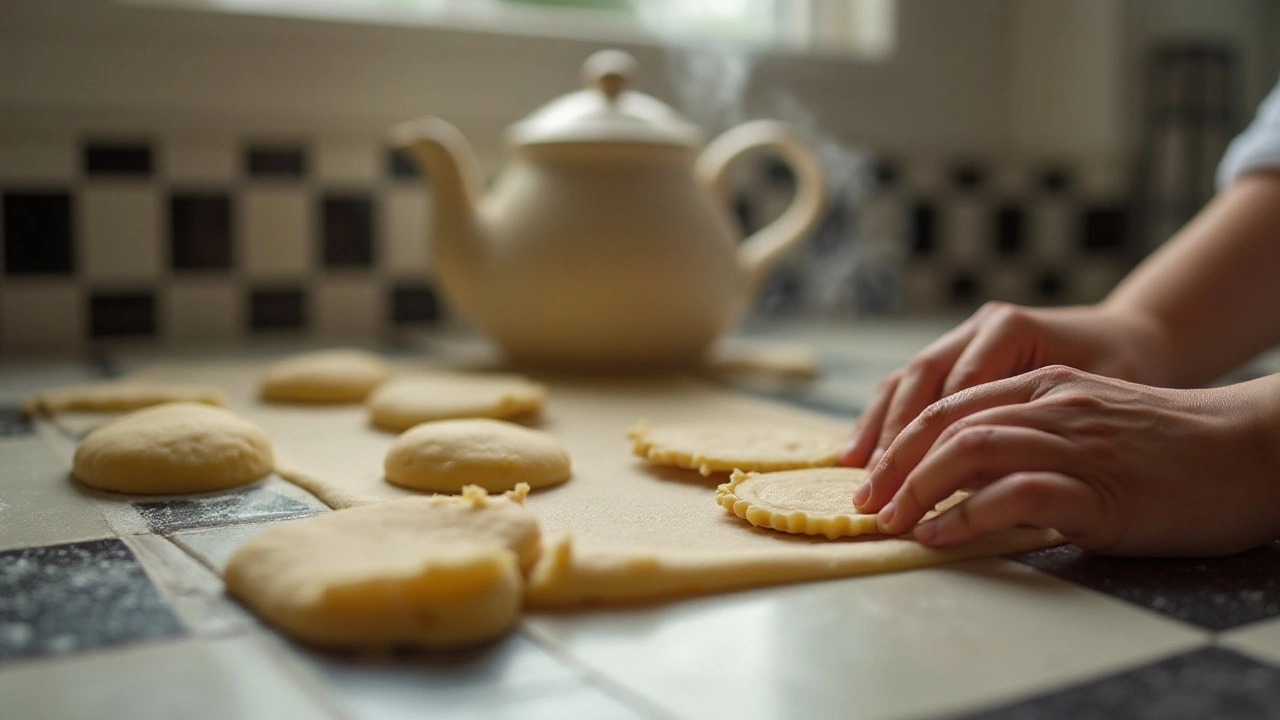
Secrets to Perfect Textures and Flavors
When it comes to crafting a legendary cookie, perfecting the texture and flavor is much like piecing together a culinary puzzle. The magic begins with choosing the right combination of ingredients. For instance, using softened butter instead of melted or cold butter can dramatically affect a cookie’s texture. Soft butter helps to create air pockets when creamed with sugar, leading to a light and fluffy dough, while chilled butter can make cookies denser and more stable.
But the journey to cookie perfection doesn’t end with butter's consistency. The type of sugar used, whether brown or white, plays a crucial role in flavor and texture. Brown sugar, rich in molasses, retains moisture and results in chewier cookies, while white sugar encourages a crispier texture. Balancing these sugars can help you create a cookie that’s both crunchy on the outside and delectably chewy inside.
Another secret lies within the flour. Different types of flour provide varying levels of gluten, impacting the cookie's structure dramatically. All-purpose flour is the most commonly used, offering a balanced structure, but for those aiming for a softer bite, incorporating cake flour can lend an extra tender crumb. For a unique twist, try substituting a small percentage of the flour with almond meal or oats for added flavor and texture. Legendary cookies often owe their distinctive taste to such innovative flour blends.
“The secret of baking is that it transforms simple, even poorly regarded stickers of ingredients into something otherworldly.” – Nigel Slater
Let’s not overlook the crucial resting period for your dough. Allowing the dough to chill for at least 24 hours can work wonders, enhancing flavors and improving consistency. This rest time lets the dry ingredients absorb the wet ones thoroughly, resulting in a cookie with a depth of flavor that rushed versions simply can't match.
When it comes to flavor, experimentation and creativity can yield delightful results. Adding a pinch of sea salt on top post-bake can elevate the sweetness and bring out subtle flavors. Similarly, integrating spices like cinnamon or nutmeg, or extracts such as vanilla or almond, can enhance the cookie’s complexity. Testing different ratios and baking times can also lead to surprisingly delightful combinations, transforming a traditional homemade cookie into something truly memorable.
| Ingredient | Impact |
|---|---|
| Butter | Texture (Softness vs. Crispness) |
| Sugar | Flavor & Moisture Balance |
| Flour | Structure & Softness |
Unique Cookie Traditions and Stories
The world of cookies is woven with rich traditions and captivating stories that vary from culture to culture. This tapestry of treats dates back centuries, each cookie carrying its own legacy that has been passed down through generations. In Italy, for instance, there is the famed biscotti, a twice-baked delight that has transcended its humble beginnings in Roman times to become a staple accompaniment to coffee. Its crunchy texture and almond flavor make it a beloved choice during festive celebrations and casual teatimes alike. The Mondial des Arts Sucrés, an esteemed pastry competition, has featured biscotti, showcasing its continued significance in the world of artisanal baking.
Across the pond in America, the chocolate chip cookie holds a special place in the hearts of many. Born out of a happy culinary accident by Ruth Wakefield in the 1930s, when she added broken chocolate pieces into cookie dough, this classic has become a cornerstone of American cookie culture. As Ruth famously said, "The secret is not in the ingredients, but in the impossibilities turned possible."
In Germany, the rich and spiced Lebkuchen offers a taste of history wrapped in tradition. These gingerbread-like cookies, traditionally baked for Christmas, carry an assortment of spices such as cinnamon, cloves, and cardamom. Named after the city of Nuremberg, which is famed for producing them, Lebkuchen has become synonymous with warm holiday gatherings. A 2020 study found that over 80% of German households continue to partake in this charming tradition during the festive season.
Asian countries have their own cookie stories as well. Consider the delicate fortune cookie, a staple of Chinese restaurants in Western countries, celebrated for its cryptic messages. Despite popular belief, the fortune cookie originated in Japan, where a similar cookie called "tsujiura senbei" has been consumed for centuries. Its journey across the ocean demonstrates how cookies can transcend cultural boundaries and create unique experiences.
"Cookies, in all their sweet simplicity, are a symbol of connection to the world," noted food historian Dr. Emily Neville, encapsulating how these confections unite people across landscapes and generations.
The Nordic regions have their own cookie narrative packed with warmth and tradition. Swedish Pepparkakor, spiced cookies often enjoyed during St. Lucia’s Day, are famed not only for their flavor but their shape. Heart, star, and flower-shaped cookies are exchanged as tokens of goodwill, along with a cup of warm glögg, a form of mulled wine. This exchange encapsulates the spirit of community during the long, cold winters.
Sometimes, these cookies even find their way into rituals. One such example is the Polish "Paczki Day," celebrated on the Thursday before Ash Wednesday, where cookies play a prominent role. This day allows sharing of sweets like faworki among friends and relatives, creating joy even amidst impending Lent fasting.
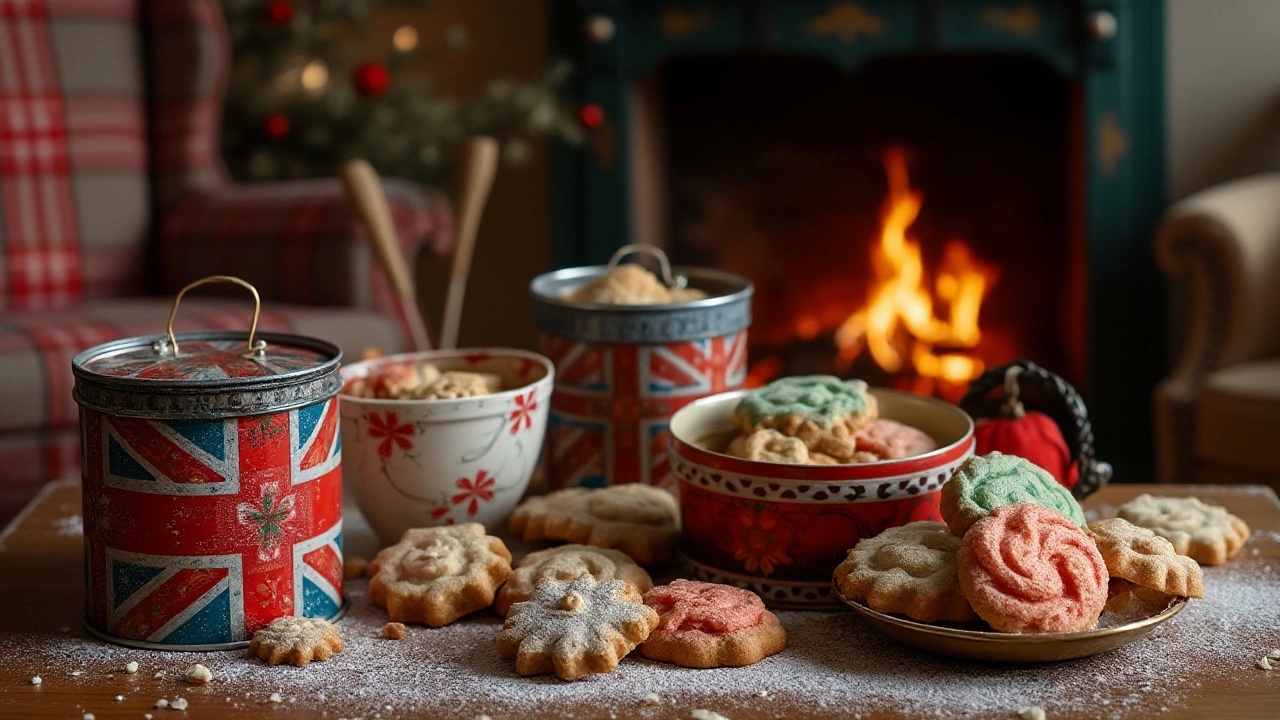
Crafting Your Own Signature Cookie
Creating your own signature homemade cookies is like designing a culinary masterpiece that reflects your personal touch and taste preferences. The process begins with understanding the basics of baking and then adding a pinch of creativity to make it truly unique. Start by selecting a base recipe that speaks to you; it could be the simplicity of a sugar cookie or the decadence of a chocolate-filled delight. Once you've settled on your base, think about the flavors and textures you want to highlight. Perhaps it's the surprise crunch of crushed peppermint or the fragrant warmth of almond extract.
Don't shy away from experimenting with different ingredients to shape your very own legend. Mix different types of flour, like almond or oat, to introduce subtler flavors and healthier options into your creation. Explore the world of sweeteners—brown sugar adds a caramel undertone, while honey or maple syrup can offer a natural sweetness. Consider this: the celebrated chef and baker Dorie Greenspan once said,
"Baking is about sharing, and if you have something to share, wow, it can be wonderful."Indeed, part of the joy of making a signature cookie is sharing it with loved ones, turning your kitchen into a place of love and warmth.
To truly set your cookie apart, think about the presentation. Add texture with a sprinkle of sea salt, drizzle of chocolate, or a dusting of confectioners' sugar. Presentation isn't just visual; it’s also about how the cookie feels when you take a bite. Achieving that perfect bite involves balancing moisture and crispness. To aid in this balance, create a test batch to fine-tune ingredient proportions and baking time. Document your process meticulously, noting any tweaks, so that your recipe can be replicated or evolved.
Finally, the naming of your cookie is part of its identity. A catchy or sentimental name can make your homemade joy legendary in your circle. Whether it's "Grandma's Secret Spice Delight" or the "Midnight Chocolate Dream," the name should evoke curiosity and a sense of the cookie's essence. In fact, according to a food trends report, uniquely named baked goods see a 20% higher interest in local bake-offs and fairs. This tiny detail adds to the allure and legacy of your creation.
Your signature cookie is more than just a recipe; it's a canvas for creativity and a token of affection. Once you have perfected your creation, the world of baking competitions, neighborhood bake sales, and family gatherings stands open before you. Embrace the opportunity to share it with others and watch as your little piece of cookie magic leaves a mark, one bite at a time.

